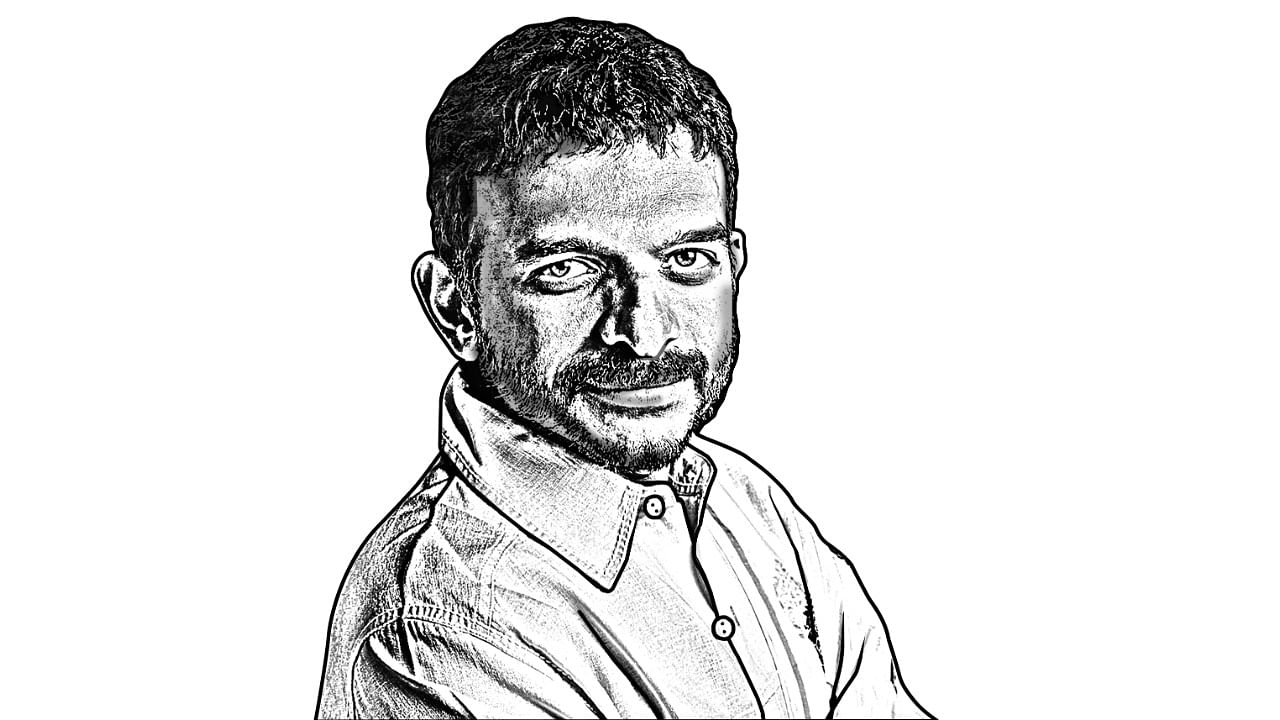
T M Krishna the mind questions, the music moves, the mountains beckon @tmkrishna
Credit: DH Illustration
As India was busy with its national elections, our mind space occupied with all that we have been assaulted with on our social media platforms, the ‘real’ assault on Gaza went on unnoticed. Last week, the Rafah camp, where a number of displaced Palestinians were being sheltered, was bombed. This caused such an uproar across the world that even election-frenzied Indians turned their focus towards Palestine, even if briefly. Politicians and campaigners paused for a moment to tweet about Rafah. This included those who have been least bothered about the Palestinian struggle.
One could take the view that it is good that finally even those who never cared for Palestinians have joined the outcry. There may be some validity to such an argument, but it is very limited. The fact that we need a State to do something so outrageous for people to ‘feel’ is worrisome. Even this universal condemnation was only because the attack was on a camp. If the same people had been killed at their homes or while walking down the street, there would have been no such outburst. Meaning, the same Israeli military firing the same weapons on innocent individuals would have been excused as collateral damage. Many may have even blamed Palestinians for bringing it upon themselves. We needed something so wrong to happen to find it problematic. For decades, Palestinians have been killed, arbitrarily arrested, and their lands occupied. That I even need to state this fact again and again informs us of the skewed nature of our views of the region and the people. The world has just remained a mute spectator.
As support poured in from across the globe, another common phenomenon unravelled. The attack on the Rafah camp was equated to the killing of another set of people elsewhere in the world. The fact that both sets of people were killed is the commonality, but it stops there. The problem in stating this is the fear that the inference drawn from such a position will be that we are not truly disturbed by the death of one set of people. This is a complete fallacy. We must have the emotional maturity to feel distraught and angry when deaths, especially violent ones, occur, irrespective of the victims’ identity and place. But, this does not mean the two different incidences have to be equated as the same. Just as there is the principle of equity in social upliftment and affirmation, there has to be a similar discernment in understanding violence.
The historical and political divergences, economic and social differences and, above all, power inequalities have to be factored in before we even venture into exploring similarities. In most cases, we do not know enough about the situations, and are unwilling to keep aside our prejudices, spend time reading and listening to multiple voices. Knee-jerk, unthinking judgement only hurts public discourse and advantages the brainwashers of the world. Yet, with utter disregard, we share twisted facts and blatantly false information.
In the case of the Palestine-Israel conflict, parameters for each side are also different. In the case of Israelis, observers are expected to differentiate between the Israeli government and the people of Israel when speaking of offences. But when it comes to the Palestinians, Hamas and Palestinians are considered one and the same. Hence, attacking members of Hamas is the same as shooting down Palestinians! With regard to critique and support, too, there are differences. When I support Palestinians and their cause, I am labelled a Hamas sympathiser. On the other side, if I condemn the Israeli government for its actions, I become anti-Semitic!
The Rafah incident brought forth another complexity. The solidarity image shared by over 40 million people across the globe turned out to be AI-generated. Even before this information became public, it was obvious that the image had been tinkered with. Activists argue that the sharing of such designed, non-confrontational depictions allows for an impersonal, stake-less expression of solidarity, which has very short-lived value, if any at all.
There is also this thought that such synthetic picturizations must be seen as symbolic representations rather than actual depictions of reality. Keeping in mind the moral dilemmas surrounding war photography, removing actual people — in this case Palestinians — from any representative image is dangerous. It makes it easy for the rest of us to escape confronting the unfolding reality. The idea of a ‘humanitarian crisis’ is a comfortable veil that triggers the needed sympathy for healthcare and civic support without having to find solutions for the underlying political conflict. Our unmindful and non-participatory accord only perpetuates the actual violence. In an universally Islamophobic environment, such an AI image lets people hold on to their hatred for Muslims, yet demonstrate supposed solidarity. A grotesque form of self-actualisation.
Social media allows us to view and share pictures, quotes, and video clips within seconds. We even feel a degree of sadness while looking at these shares. But, we need to pause for a moment and wonder how much of what we are feeling is about ourselves rather than the incident at hand. There is also the social pressure to be on the right side of the narrative. We are willing to just go with the flow. We choose the direction of the flow depending on our socio-political inclination. Even this can suddenly change if our surroundings shift. For us, it is a game of ‘looking good’ while, for those on the ground, it is unrelenting marginalisation, generational oppression, and death.